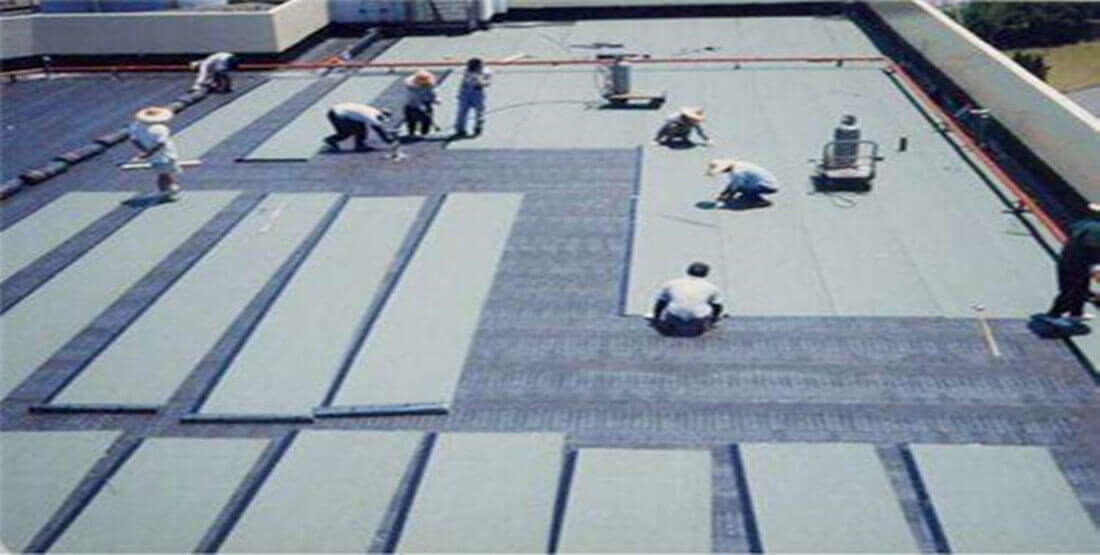Waterproof membrane construction, which parts are prone to leakage and prevention measures
date: 2019-06-26 09:25:07Source: AdminViews: 1446

1.Waterproof membrane bubbling
(1). Phenomenon:
Bubbling is found after the membrane is laid, generally from small to large, and the number and size of bubbles increase with increasing temperature.
(2). Reason analysis:
The base layer is not dry. The surface is not cleaned. Water vapor infiltrates into the bottom of the waterproof layer. The base layer is not coated with the treatment agent. The binder and the membrane material do not match. The brushing is uneven. When the membrane is laid, the air on the bottom surface is not removed, and some exhaust grooves are blocked.
(3). Prevention measures:
The base layer must be dry and tested by simple test method before it can be laid; the base layer should be cleaned, the selected base treatment agent and binder should be matched with the material properties of the membrane, and can be used after passing the test; After the applied base treatment agent is dried, the adhesive is applied. When the membrane is laid, the air below must be wiped off and rolled tightly. It is also possible to use a method of sticking, sticking, and emptying to ensure that the exhaust passage is unblocked.
2. Membrane waterproof layer crack
(1). Phenomenon:
The waterproof layer appears along the cracks in the end of the prefabricated roof panel, joint cracks, and irregular cracks.
(2). Reason analysis:
Blindly using membranes with low elongation, the plate ends and joint details are not used as additional buffer layers and reinforcement layers, and the construction method is wrong, such as too tight when laying the membrane.
(3). Prevention measures:
1) Select the membrane with high elongation and the durability of more than 15 years;
2) A buffer layer is provided at the end seam of the prefabricated roof panel, and 300 mm wide membrane is laid in dry. It should not be pulled too tight when laying the membrane. It should be put laid in loose state in summer.
When the waterproof membrane has cracks, it is cut along the regular crack line by a cutter. If there is no gap in the base layer, the seam should be slit, the seam width is 20mm, the flexible sealing paste is embedded in the seam, and a strip of 200mm wide is used as a buffer layer along the seam, and then a 350mm wide roll is fully adhered. The waterproof layer of the material and the treatment of the cracks in the joint detail are the same as above.
3. Parapet root leaking
(1). Phenomenon:
The waterproof layer is hollowed along the corner of the base of the parapet, cracks, cracks in the masonry wall of the parapet, cracks on the top of the wall, the gable is pushed out of the wall, and rainwater is poured into the inner wall from the gap.
(2). Reason analysis:
When screeding, rigid waterproof layer, etc., it should be closed to the parapet, no gaps are left, and the long-legged masonry wall has no expansion joints. Under the temperature difference, the gable and the parapet are cracked; Parapet and other root shadow angles does not follow the rules to do arc, and the waterproof layer of the paved material is not made into a buffer layer according to the regulations, and the end of the membrane is not well sealed, resulting in cracks and leaking of water.
(3). Prevention measures:
When leveling the floor and rigid waterproof layer on the roof of the building, a gap of 30mm should be left at the junction of the parapet, and the flexible sealing paste should be embedded in the seam; the corner of the base of the parapet is rounded, and when the height of the parapet is greater than 800mm, leave the groove, the end of the membrane should be cut into the reserved groove, and the groove should be embedded with cement mortar or sealing material after nailing. When the height of the parapet is less than 800mm, the end of the membrane is directly laid on the top surface of the parapet, and then the reinforced concrete is pressed.
The roof screed or rigid waterproof layer is close to the parapet. When there is no gap, the 20~30mm wide groove should be cut along the parapet, then brush it clean, the flexible sealing paste is embedded in the trough; when the parapet has cracks, it should be repaired with grouting material. If the wall of the gable of the gable has protruded from the wall, it must be removed and rebuilt. The opening of the membrane should be repaired and sealed.








